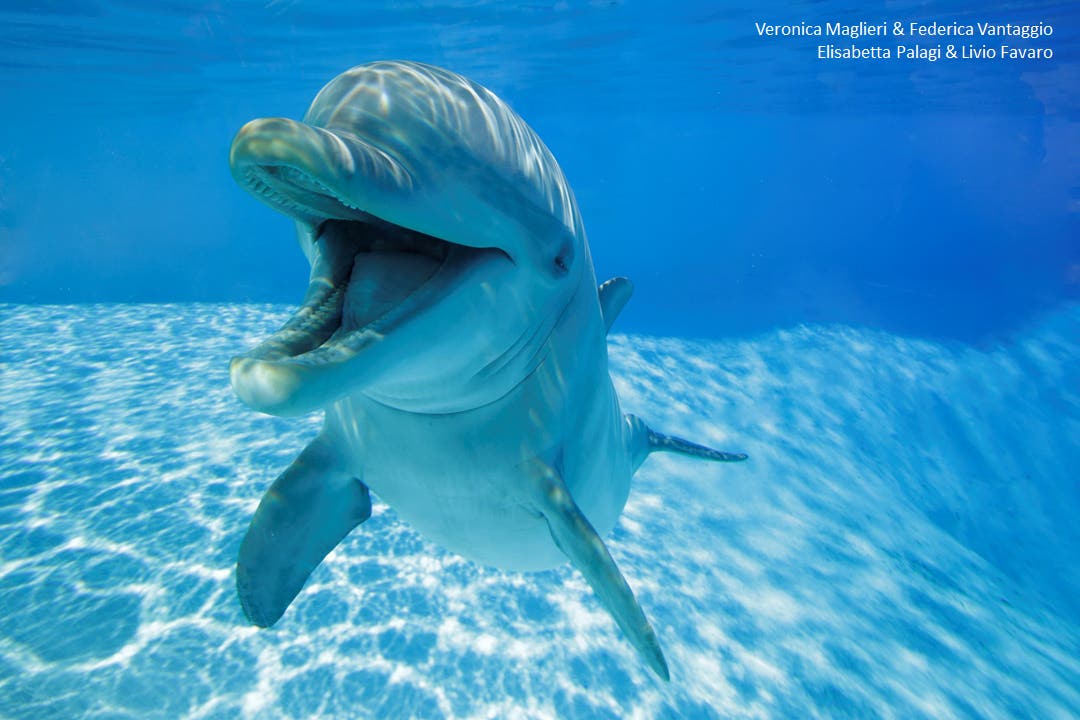Dolphins ‘smile’ during play, scientists find
They are social animals and can often be seen in small groups of up to 15 dolphins.

Your support helps us to tell the story
From reproductive rights to climate change to Big Tech, The Independent is on the ground when the story is developing. Whether it's investigating the financials of Elon Musk's pro-Trump PAC or producing our latest documentary, 'The A Word', which shines a light on the American women fighting for reproductive rights, we know how important it is to parse out the facts from the messaging.
At such a critical moment in US history, we need reporters on the ground. Your donation allows us to keep sending journalists to speak to both sides of the story.
The Independent is trusted by Americans across the entire political spectrum. And unlike many other quality news outlets, we choose not to lock Americans out of our reporting and analysis with paywalls. We believe quality journalism should be available to everyone, paid for by those who can afford it.
Your support makes all the difference.Dolphins “smile” during play, scientists have found.
The animals are known to be very playful and have often been observed performing underwater acrobatics, playing with objects and chasing each other.
But the researchers have found bottlenose dolphins (Tursiops truncates) have an “open mouth” expression that they use to communicate with each other during play, much like a smile in humans.
And when these creatures beamed at their playmates, they received a similar response 33% of the time.
Evolutionary biologist Dr Elisabetta Palagi, of the University of Pisa, said: “We’ve uncovered the presence of a distinct facial display, the open mouth, in bottlenose dolphins, and we showed that dolphins are also able to mirror others’ facial expression.
The relaxed open mouth, seen in social carnivores, monkeys' play faces, and even human laughter, is a universal sign of playfulness, helping animals - and us - signal fun and avoid conflict
“Open-mouth signals and rapid mimicry appear repeatedly across the mammal family tree, which suggests that visual communication has played a crucial role in shaping complex social interactions, not only in dolphins but in many species over time.”
Bottlenose dolphins can be found in the UK and the best places to see them are the Moray Firth in Scotland, Cardigan Bay in mid-Wales and the coasts of Cornwall, Northumberland and North Wales.
They are very social animals and can often be seen in small groups of up to 15 dolphins.
Aside from humans, other species such as chimpanzees have been observed using facial expressions to communicate playfulness but biologists have wondered whether marine animals do the same.
To understand more, the researchers recorded 22 captive bottlenose dolphins while they were playing in pairs and while playing with their human trainers.
Analysing 80 hours of video involving 837 play sessions, the researchers found that the dolphins used the open mouth expression when playing with each other but not when playing with humans or playing on their own.
Out of a total of 1,288 open mouth events during social play sessions, 92% of these events occurred during dolphin-dolphin play sessions, the scientists said.
The creatures were also more likely (89%) to use the open mouth expression when their faces could be seen by their playmates, the team added.
Dr Palagi said: “The relaxed open mouth, seen in social carnivores, monkeys’ play faces, and even human laughter, is a universal sign of playfulness, helping animals – and us – signal fun and avoid conflict.”
She added: “Some may argue that dolphins are merely mimicking each other’s open mouth expressions by chance, given they’re often involved in the same activity or context, but this doesn’t explain why the probability of mimicking another dolphin’s open mouth within one second is 13 times higher when the receiver actually sees the original expression.
“This rate of mimicry in dolphins is consistent with what’s been observed in certain carnivores, such as meerkats and sun bears.”
The research is published in the journal iScience.